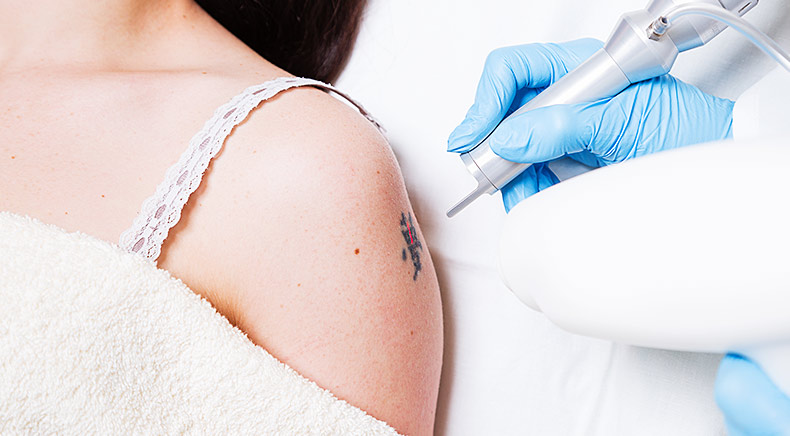
The ink in professional and amateur tattoos is imbedded into the lower levels of the skin and because of this there is no perfect way to remove tattoos.
You can salt, sand, cut, graft, use the infrared coagulator, or vaporize the tattoos with CO2 lasers. A significant medical breakthrough has been the development of the Q-Switched lasers for the removal of both amateur and professional tattoos. Some of these new lasers are effective in removing most tattoos. Current lasers engineered and focused for removing tattoos are: Q-Switched Ruby, Q-Switched Alexandrite, Q-Switched ND:YAG, Versapulse and the Vasculight.
What are the treatments like? The treatment is like taking off layers of an onion. The laser is most effective for blue-black tattoos, and is less effective for green, red, and yellow tattoos but still is effective. Sometimes a combination of the lasers will be used to create the best cosmetic result. This technique involves a special form of laser light that feels like someone shuffling across the carpet and giving you a small shock. For those who have a low pain tolerance and where the minor prick sensation is annoying, a topical anesthetic can be used and is applied one to two hours before the laser treatment.
How many treatments are required? The number of treatments required for maximum improvement depends on the size, location, depth and color of your tattoo. Treatments should be placed 4 to 8 weeks apart to allow your body to remove the maximum amount of tattoo pigment. Treatment sessions usually take from 10 to 30 minutes. You will continue to see a lightening of your tattoo after each treatment as your body disposes of more pigment. Some tattoos require 4-5 treatments others 6-8.
Post laser Care:
1. Apply Polysporin cream (not ointment) to the treatment area, two to three times daily
2. There should be very little discomfort from this laser treatment. If you like you could keep some Telfa bandage over top for the first week if it is an area of friction with clothing
3. Wash, bath, or shower normally, being careful not to scrub this area with a face cloth or expose it to the direct force of the shower head
4. Physical exercise is permitted as long as the patient is careful to avoid rubbing and irritating the area
5. Before any outdoor sun activities, use 30 sunscreen on the treated area for the next 6 months.
Dr. B. Kent Remington
